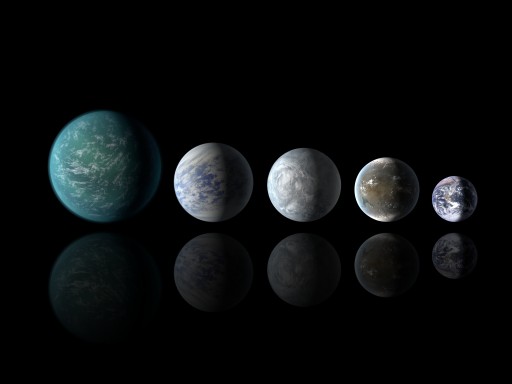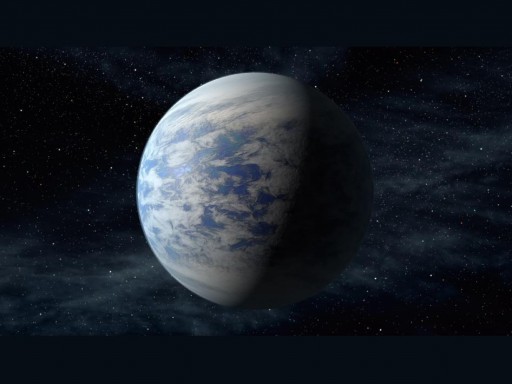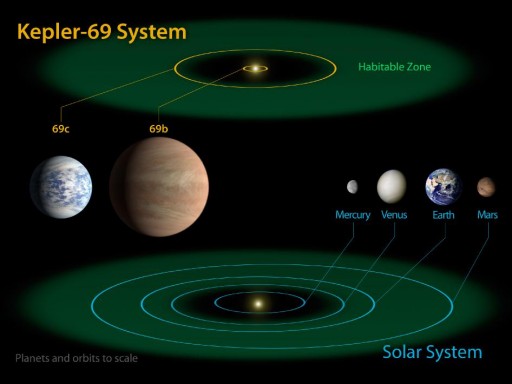NASA’s Kepler discovers its smallest ‘habitable zone’ planets to date
April 23, 2013

Relative sizes of all of the habitable-zone planets discovered to date alongside Earth. Left to right: Kepler-22b, Kepler-69c, Kepler-62e, Kepler-62f and Earth (except for Earth, these are artists’ renditions). (Credit: NASA Ames/JPL-Caltech)
NASA‘s Kepler mission has discovered two new planetary systems that include three super-Earth-size planets in the “habitable zone,” the range of distance from a star where the surface temperature of an orbiting planet might be suitable for liquid water.
Two of the newly discovered planets orbit a star smaller and cooler than the sun. Kepler-62f is only 40 percent larger than Earth, making it the exoplanet closest to the size of our planet known in the habitable zone of another star.
Kepler-62f is likely to have a rocky composition. Kepler-62e, orbits on the inner edge of the habitable zone and is roughly 60 percent larger than Earth.
The third planet, Kepler-69c, is 70 percent larger than the size of Earth, and orbits in the habitable zone of a star similar to our sun. Astronomers are uncertain about the composition of Kepler-69c, but its orbit of 242 days around a sun-like star resembles that of our neighboring planet Venus.

This artist’s concept depicts Kepler-69c, a super-Earth-size planet in the habitable zone of a star like our sun (credit: NASA Ames/JPL-Caltech)
Scientists do not know whether life could exist on the new-found planets, but their discovery signals we are another step closer to finding a world similar to Earth around a star like our sun.

The diagram compares the planets of the inner solar system to Kepler-69, a two-planet system about 2,700 light-years from Earth (credit: NASA Ames/JPL-Caltech)
The five planets of the Kepler-62 system orbit a star classified as a K2 dwarf, measuring just two-thirds the size of the sun and only one-fifth as bright. At seven billion years old, the star is somewhat older than the sun. It is about 1,200 light-years from Earth in the constellation Lyra.
A companion to Kepler-69c, known as Kepler-69b, is more than twice the size of Earth and whizzes around its star every 13 days.
The Kepler-69 planets’ host star belongs to the same class as our sun, called G-type. It is 93 percent the size of the sun and 80 percent as luminous and is located approximately 2,700 light-years from Earth in the constellation Cygnus.